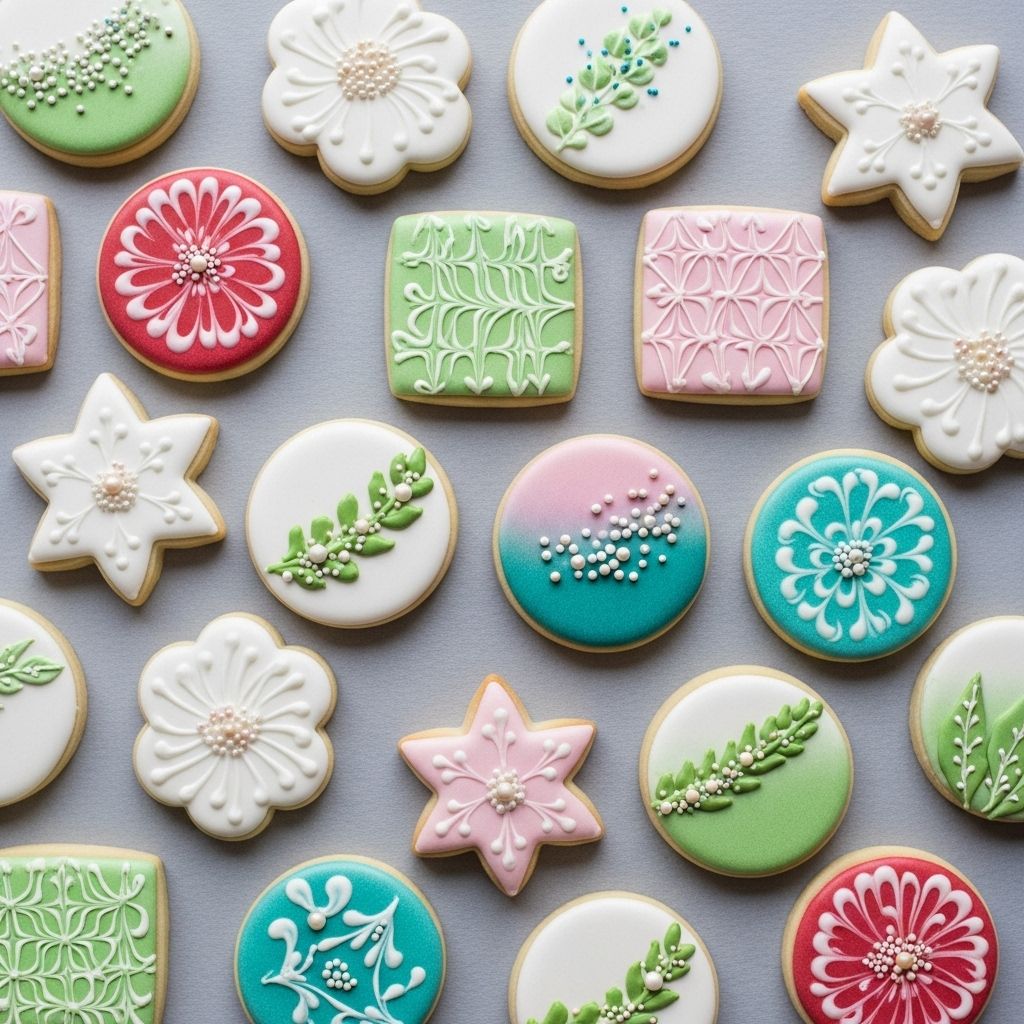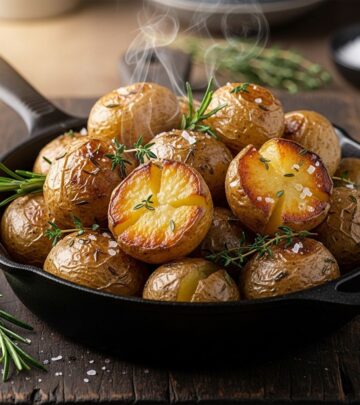How to Decorate Cookies Like a Pro: The Ultimate Guide
Flawless icing consistencies and precise piping elevate simple treats into artistic delights.

How to Decorate Cookies Like a Pro
Baking cookies offers delicious rewards, but decorating them elevates the experience into edible artistry. From classic sugar cookies adorned with crisp icing, to intricately piped festive designs, achieving professional results can seem daunting. With the right tools, techniques, and understanding of royal icing, anyone can transform ordinary cookies into eye-catching masterpieces. This guide reveals the essential steps and expert tips for decorating cookies like a seasoned pro, whether you’re a beginner or seasoned baker aiming for next-level results.
Table of Contents
- Why Decorate Cookies?
- Essential Tools and Ingredients
- Preparing Cookies for Decorating
- All About Royal Icing
- Understanding Icing Consistencies
- Step-by-Step Decorating Techniques
- Troubleshooting Common Mistakes
- Storing and Gift Presentation
- Frequently Asked Questions (FAQs)
Why Decorate Cookies?
Decorating cookies is more than a finishing touch—it’s a creative process that celebrates flavor, festivity, and craftsmanship. Some reasons you might want to elevate your cookie game include:
- Celebration: Beautifully decorated cookies are perfect for holidays, birthdays, weddings, and special occasions.
- Personalization: Custom designs allow you to match themes, color palettes, or write names/messages.
- Gift Giving: Hand-decorated cookies impress and delight, offering a personal, edible gift.
- Creative Expression: Decorating cookies channels artistic energy, whether piping patterns or painting with food coloring.
Essential Tools and Ingredients
Before starting, assemble the right equipment and supplies. Having everything at hand ensures a smooth, efficient decorating session and optimal results.
Core Tools
- Piping Bags: Reusable or disposable bags for precise icing application.
- Piping Tips: Most commonly, #1–#3 round tips for outlining and details, and small leaf or star tips for textures.
- Cocktail Picks or Toothpicks: For spreading icing, fixing mistakes, and drawing swirls or marbling effects.
- Spatula: Offset spatulas are ideal for spreading icing smoothly.
- Squeeze Bottles: Useful for flooding larger cookie surfaces with icing.
- Small Bowls: For coloring and thinning icing in small batches.
- Food Coloring: Gel-based coloring offers strong hues without thinning icing.
- Baking Sheets & Parchment Paper: For cooling and staging cookies, and for organized decorating.
Key Ingredients
- Royal Icing: The foundational medium for precise, long-lasting decoration. Detailed below.
- Sprinkles, Sugars, Pearls: For textured accents and color.
- Edible Gold or Silver: Used for metallic touches.
- Flavorings: Lemon extract, almond extract, or vanilla for unique icing flavors.
Preparing Cookies for Decorating
Perfectly baked cookies are the best canvas. Here’s how to prepare them:
- Choose the Right Recipe: Use a no-spread sugar cookie dough designed to hold its shape and provide a flat surface.
- Chill Thoroughly: Chill the rolled and cut dough before baking to minimize spreading and ensure distinct shapes.
- Even Thickness: Roll dough to a uniform thickness (about 1/4 inch) for consistent baking and decorating.
- Cool Completely: Icing applied to warm cookies melts; make sure cookies are completely cool before starting.
- Optional Surface Prep: Wipe cookie surfaces lightly with a clean towel or brush away crumbs for an ultra-smooth finish.
All About Royal Icing
Royal icing is the undisputed king of cookie decorating. It dries to a glossy, hard finish, making it excellent for intricate details, vibrant color, and crisp definition. It’s typically made from three ingredients:
- Powdered Sugar
- Egg Whites or Meringue Powder
- Water
Optional flavorings and cream of tartar may be added for stability or taste.
Why Royal Icing?
- Versatile: Vary the consistency for outlining, flooding, or detail work.
- Long-Lasting: Sets hard, allowing cookies to be stacked or packaged.
- Customizable: Adapts beautifully to any color and flavor.
Understanding Icing Consistencies
The consistency of royal icing is the secret to flawless designs. Master these and any decoration is within reach.
| Consistency | Common Uses | Characteristics |
|---|---|---|
| Stiff | Piping flowers, fine details, 3D elements | Holds peaks; thick, doesn’t spread |
| Medium | Outlining cookies, borders, lettering | Flows slowly but smooths out |
| Flood | Covering surfaces, marbling, filling inside outlines | Fluid, spreads evenly, levels itself |
To adjust:
- Thin icing by adding a few drops of water at a time.
- Thicken icing by mixing in more sifted powdered sugar.
Test consistencies by tracing a line in the icing with a butterknife; note how quickly it disappears (flood: about 10 seconds, medium: about 15-20 seconds, stiff: doesn’t disappear).
Step-by-Step Decorating Techniques
Follow these core techniques to achieve professional-looking cookies at home:
1. Outlining
- Use medium consistency icing and a small round tip (like #2 or #3).
- Hold the piping bag at a 45-degree angle above the cookie surface.
- Steady pressure yields a clean, even outline—this will contain the flood icing later.
2. Flooding
- Once the outline sets, fill the inner area with flood-consistency icing.
- Use a squeeze bottle for larger areas or a piping bag with a slightly bigger tip.
- Gently spread the icing to the edges with a toothpick or scribe tool.
- Pop any air bubbles for an ultra-smooth surface.
3. Wet-on-Wet Techniques
- Apply other colors or designs on still-wet flood icing: lines for stripes, dots for polka dots, or drag a toothpick to marble.
- This technique helps create blended or swirled effects that dry with the base icing.
4. Layering and Detail Work
- Allow base flood icing to dry fully (usually several hours) before piping additional designs, petals, borders, or writing. This prevents bleeding and ensures crisp results.
- For raised effects (like embroidery or 3D decorations), use stiff icing and layer carefully.
5. Other Decorative Effects
- Add sanding sugar or sprinkles while the icing is still wet for sparkle and crunch.
- Adhere gold leaf or edible glitter for a luxurious finish, using tweezers and a gentle touch.
- Brush cookies lightly with pearl or luster dust for subtle shimmer after icing dries.
Troubleshooting Common Mistakes
Don’t let small mistakes derail your decorating efforts. Here are some typical issues and how to fix them:
| Problem | Cause | Solution |
|---|---|---|
| Runny or spreading icing | Icing too thin or over-flooded | Add more powdered sugar; use a barrier outline to contain icing |
| Piping bag leaks or bursts | Overfilled or weak bag | Don’t overfill; twist and secure bag top; double-bag if needed |
| Colors bleed together | Icing too wet or humidity too high | Allow layers to dry fully before adding contrasting colors; avoid overworking icing on humid days |
| Air bubbles in icing | Vigorous mixing or resting too long | Tap filled cookies; pop bubbles with a toothpick before icing sets |
| Icing dries dull, not shiny | Insufficient drying time or thick icing | Let cookies dry in front of a fan for a glossy finish; use slightly thinner icing for floods |
Storing and Gift Presentation
After investing time and artistry into decorated cookies, correct storage and presentation ensures they stay fresh and look beautiful:
- Dry Overnight: Allow cookies to dry uncovered at room temperature for 6–8 hours (or overnight) before packaging.
- Layer Separation: Use parchment or wax paper between layers when stacking to prevent sticking or smudging.
- Airtight Storage: Store in airtight containers at room temperature for up to one week.
- Freezing: Decorated cookies freeze well; separate with parchment and use tight containers. Thaw, uncovered, to avoid condensation smudging designs.
- Gift Packaging: Use individual bags tied with ribbon, or arrange in boxes with tissue or paper shred for presentation.
Frequently Asked Questions (FAQs)
Q: How do I keep royal icing from drying too quickly while I work?
Cover icing bowls with plastic wrap, pressing wrap directly onto the surface. If using piping bags, seal the tips with a damp paper towel or rubber band when not in use.
Q: What’s the best way to get vibrant icing colors?
Use gel-based or paste food colors; add a bit at a time, mix thoroughly, and let icing sit for 30 minutes—colors often deepen as they rest.
Q: How long does decorated icing take to dry completely?
Surface drying for base layers takes a few hours, but for fully set icing (suitable for stacking or packaging), allow 6–8 hours or overnight at room temperature.
Q: Can I use royal icing on cookies other than sugar cookies?
Absolutely! Royal icing pairs well with gingerbread, shortbread, or any sturdy, flat-topped cookie that holds its shape during baking.
Q: My icing is forming color spots — why?
This is usually caused by over-saturated or not-mixed food coloring. Mix thoroughly and use gel-based color for best results.
Q: Are there ways to add flavor to royal icing?
Yes; add clear extracts (lemon, almond, or vanilla), citrus zest, or concentrated flavor oils to the icing for custom tastes. Avoid oil-based flavors, which impede icing setting.
Final Tips for Success
- Practice patience: Decorating cookies takes time and practice. Don’t rush details or drying times.
- Experiment with designs: Sketch patterns on paper or practice piping on parchment before decorating the actual cookies.
- Stay organized: Prep all icings, colors, and designs before starting. Work in batches for efficiency.
- Have fun: Remember—the best cookies are made (and decorated) with care!
Read full bio of Anjali Sayee












